#AFM imaging
Explore tagged Tumblr posts
Text
youtube
#Atomic Force Microscopy#nanomechanical tool#cancer liquid biopsy#cancer diagnostics#extracellular vesicles#circulating tumor cells#nanotechnology#cell elasticity#non-invasive biopsy#cancer biomarkers#early cancer detection#precision oncology#AFM imaging#tumor analysis#biomechanics#personalized cancer treatment#cancer research#molecular profiling#cellular adhesion#liquid biopsy techniques.#Youtube
0 notes
Text
A typical AFM image is shown in figure 1.6.

"Chemistry" 2e - Blackman, A., Bottle, S., Schmid, S., Mocerino, M., Wille, U.
1 note
·
View note
Text
My artistic side is not lost in the world of science!
My art featuring antibiotics that slow down or dissolve domains in bacteria membranes was selected as the cover of the latest Nano Letters issue! The cover art combines hand-drawn bacteria and 3D rendered atomic force microscopy images of bacteria membranes.
My process of drawing and shading the coccus bacteria:

And the final cover:

I had a great time thinking about the concept of this cover, drawing the bacteria, making the 3D bacteria membrane views from my AFM data, and putting everything together. It was a great creative work, although it was under a stressful deadline for the manuscript resubmission including the cover art suggestion.
The Nano Letters issue and the article here: https://pubs.acs.org/toc/nalefd/24/38
#science#art#postdoc#research#bacteria#antibiotics#original content#cover art#journal cover#Nano Letters#publication#scientific illustration#scientific publication
29 notes
·
View notes
Text
X-Men 2 fans: First Look at Nightcrawler and Stryker as brothers in Glenrothan

Brian Cox‘s feature directorial debut “Glenrothan” — billed as his “love letter to Scotland” — has wrapped production, with a first look revealed showing the “Succession” star alongside Alan Cumming in a room full of whisky barrels.
Alongside revealing a first look from the feature, Protagonist Pictures has come aboard for worldwide sales and is set to screen exclusive footage for buyers at the upcoming American Film Market.
Lionsgate, which co-developed the project with London based studio Nevision, has taken U.K. rights on the family drama, which shot in Scotland.
In “Glenrothan,” Donal (Cumming) reluctantly returns to the Scottish Highlands after 35 years in Chicago to make amends with his estranged older brother, Sandy (Cox). Sandy needs Donal to take over the family’s whisky distillery or he will be forced to sell and give up on the family’s legacy. But their reunion forces the brothers to confront the past and the real reason Donal left Glenrothan. Shirley Henderson (“Harry Potter and the Goblet of Fire,” “See How They Run”) and Alexandra Shipp (“Barbie,” “Anyone But You”) also star in the film.
“Glenrothan” is produced by Cox, Neil Zeiger, Crystine Zhang (“Prisoner’s Daughter,” “Lee”), Phin Glynn (“Argentina 1985,” “Kill The Jockey”), Nic Crum (“Book of Love”), James Cabourne and Vladimir Zemtsov (“Club Zero”). The film is co-produced by Nevision and Blazing Griffin Pictures in association with Screen Scotland, Oval-5, Gold Rush Pictures, Head Gear, Infinity Hill and Lionsgate.
“’Glenrothan’ is a poignant, funny and powerful story about the universal themes of family and heritage, set against the stunning backdrops of Scotland and steeped in the world of whisky,” said Protagonist CEO Dave Bishop. “Brian is an undeniable talent, both behind and in front of the camera, and is joined by the exceptional Alan Cumming — as such we are delighted to introduce buyers to this special film when we debut exclusive footage at the upcoming AFM.”
Neil Zeiger, lead producer added: “I have thoroughly enjoyed helping bring ‘Glenrothan,’ Brian’s ‘love letter to Scotland’, to the screen. Working with our incredible cast led by Alan, Shirley and Alexandra, Brian directed the film brilliantly. A universal story, wonderful performances and stunning images define the film. I am confident Glenrothan will compel and captivate audiences wherever in the world they are.”
Protagonist’s current slate includes the Venice, TIFF and San Sebastian selection “Kill the Jockey,” directed by Luis Ortega and recently selected as Argentina’s feature film contender for the 2025 Academy Awards; Samir Oliveros’ TIFF title, “The Luckiest Man in America,” starring Emmy and Golden Globe winner Paul Walter Hauser; the genre-bending comedy “Sister Midnight,” which recently screened at the London Film Festival and was nominated for Cannes’ Camera D’Or; and from directors Guy Maddin, Evan Johnson, and Galen Johnson, the political horror-comedy “Rumours,” which debuted at Cannes before going on to screen at Toronto, San Sebastian, New York and London Film Festivals.
13 notes
·
View notes
Text

Researchers explain the imaging mechanisms of atomic force microscopy in 3D
Researchers at Nano Life Science Institute (WPI-NanoLSI), Kanazawa University report the 3D imaging of a suspended nanostructure. The technique used is an extension of atomic force microscopy and is a promising approach for visualizing various 3D biological systems. Atomic force microscopy (AFM) was originally invented for visualizing surfaces with nanoscale resolution. Its basic working principle is to move an ultrathin tip over a sample's surface. During this xy-scanning motion, the tip's position in the direction perpendicular to the xy-plane follows the sample's height profile, resulting in a height map of the surface.
Read more.
#Materials Science#Science#Atomic force microscopy#Materials characterization#Nanotechnology#Kanazawa University
16 notes
·
View notes
Text
Atomic force microscopy, or AFM, is a widely used technique that can quantitatively map material surfaces in three dimensions, but its accuracy is limited by the size of the microscope's probe. A new AI technique overcomes this limitation and allows microscopes to resolve material features smaller than the probe's tip. The deep learning algorithm developed by researchers at the University of Illinois Urbana-Champaign is trained to remove the effects of the probe's width from AFM microscope images. As reported in the journal Nano Letters, the algorithm surpasses other methods in giving the first true three-dimensional surface profiles at resolutions below the width of the microscope probe tip.
Continue Reading.
46 notes
·
View notes
Text
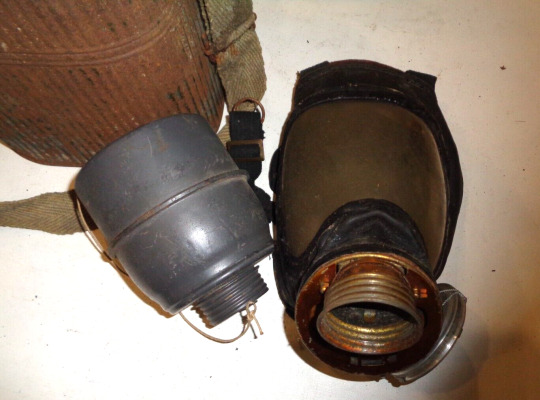

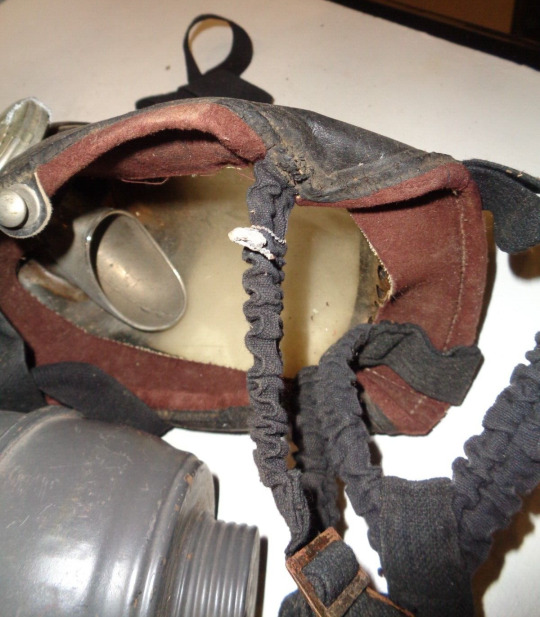
I will not comment on the French beyond saying that some of their 1930's-40's developments in chemical protection come off as almost Baroque in nature. This is a variant of the GEP (Gaz Et Protection) with an added speech diaphragm. The large metal cone in the 3rd image is to direct the user's voice into said cone. Placement on the side of the mask like this aids in the use of a standard telephone handset.
GEPs were one of many, many, many private market civilian respirators manufactured in Europe during the decades surrounding World War 2. Both the carrying case and speech diaphragm on this example appear very visually similar to the respective components of the AFM-34 kit. Not entirely sure if this is because GEP made AFM-34s, or because the patterns and shapes were readily available from a common source and simply purchased by GEP as stock for assembling their masks.
15 notes
·
View notes
Text
2 notes
·
View notes
Text

SUBJECT
The superior physicochemical ambiance provided by Chitin/Carboxylated Chitosan for the formation of hydroxyapatite film
DEPARTMENT
Department of Chemical Engineering
PROFESSOR AND STUDENT
Professor:Ten-Chin Wen
Student:Wei-Cheng Li
ABSTRACT
Chitosan (CS) and chitin (CH) are two natural polysaccharides. Chitosan with different carboxylation degrees rendering specific zwitterionic properties. In this study, carboxylated chitosan (CCS) and CH polymeric matrix was mineralized to form an hydroxyapatite film.
CS grafted carboxylated group at pH 6, 8, and 10 for products denoted as CCS6, CCS8, CCS10. It was the better degrees of carboxylated, the higher ion conductivity. CCS with zwitterion helped ions movement. Based on thermogravimetric analysis, thermal cracking temperature of the amide group on chitin increased after mineralization. In the TEM image, the PILP behavior was found, and formed hexagonal hydroxyapatite beside chitin. The Young's modulus of hydroxyapatite evaluated by AFM was 5.19±0.06GPa. Meanwhile, Ca/P ratio by EDX analysis was 1.65, similar to bones.
Original URL: 15-Student:Department of Chemical Engineering【Wei-Cheng Li】-Undergraduate Research , NCKU https://en.ur.ncku.edu.tw/book/15-Student:Department+of+Chemical+Engineering%E3%80%90Wei-Cheng+Li%E3%80%91/
The copyright belongs to the author. For commercial reprints, please contact the author for authorization, and for non-commercial reprints, please indicate the source.
2 notes
·
View notes
Note
So on the whole nano vehicles thing!
This is something people are researching in the field of nanotechnology! It's a field that combines chemistry, biology, physics (and maths/computer science in some ways but that makes it even more complicated) on the nano scale! Now first what even is nano? Nano refers to the scale of something of 10^-9 in this case it's about sizes but nano is a prefix so eh.
Regardless nanotech is a relatively new field (if you're interested in it there's a lecture called "there's plenty of room at the bottom" by Richard P. Feynman who is often considered the parent of nanotechnology) having only been brought up by the previously mentioned, R. Feynman in 1959 and only really sparking the research field to start in the 1980s.
Anyways so yay small scale science! So nanovehicles: nanovehicles are often bottom up (see: bottom-up = using bricks to build a house vs. top down = carving a house out of rock) produced small "vehicles". They came about because we're looking for ways to transport cargos in a more controlled method than we've been able to mimicking certain biological functions. But the way we've being going about it is by making tiny little car shaped molecules. As you can see in the image below just car shaped with Buckminster fullerene (not actually buckminster fullerene but spherical carbon structures) type wheels.

So basically just like cars work, movement is perpendicular to the axle(usually), however you cannot change the positioning of the axles so this thing can only move forwards and backwards.
Oh quick little side note to even analyse the motion of these things, we have to put them on a surface and depending on the type of motor that can lead to either a caterpillar like motion or just increasingly long tails. But what we can also do is use the tips AFM (atomic force microscopy)or SPM (scanning probe microscopy) and move them with that however that's incredibly expensive Sheesh. We have to do this on a surface because of Brownian motion because these things are so small they'll just move around and about randomly in solution.
Okay back to vehicles. So before I showed a 2 directional transverse moving nanocar. But in the previous ask I said there's nanovehicles that can only spin around themselves. And that's because the Axel's are thusly oriented that any transverse motion it wants to make would be obstructed by another axle. So then it can only do the spinny thing.
See below:
a) shows translational motion such as a nanocar can make.
b) shows rotational motion, such as the nanovehicle I was so excited about.
As well as these images having microscopy which shows how they have moved and where the vehicles are and it's very cool.
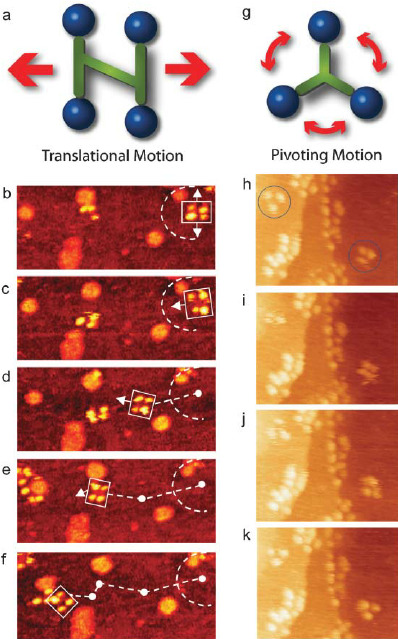
And below you can see different types of nanovehicles, 22 & 23 can do translational motion forwards and backwards. 24 can move in a slight circle around a middle point that is not its own center point.
And then you have 25, my beloved, it can only spin in circles <3 its sole purpose is to just spin around and around and around and I think that's somehow so very poetic, the fact you've been made in such a way that your sole purpose cannot be fulfilled but you did prove that yes we can move nanovehicles in more than just the two directions. Also that molecule is a blorbo to me.
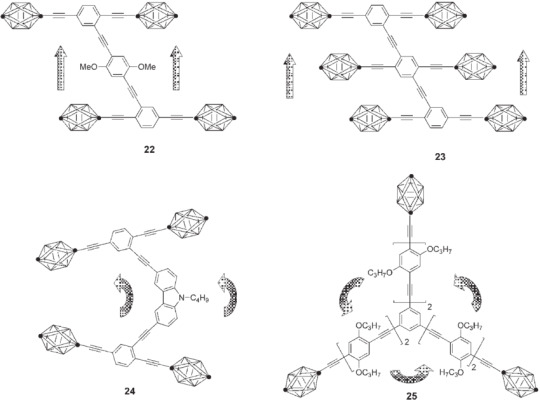
i forgot all about this and i have still never been so interested in something i understood next to nothing about thank you for infodumping lulu i heart you
2 notes
·
View notes
Text
The Revolutionary History of Nanotechnology

Nanotechnology, a groundbreaking field that has revolutionized numerous industries, continues to shape the world as we know it. In this article, we delve into the rich history of nanotechnology, exploring its origins, major milestones, and transformative applications. Join us on this captivating journey through the nano realm and discover how this remarkable technology has reshaped various sectors, from healthcare and electronics to energy and materials science.
Origins of Nanotechnology
Unveiling the Nanoscale
Nanotechnology finds its roots in the exploration of the minuscule world at the nanoscale. The concept of nanoscale was first introduced by physicist Richard Feynman in his visionary lecture in 1959, where he discussed the potential for manipulating matter at the atomic and molecular levels. This groundbreaking concept laid the foundation for the birth of nanotechnology.
The Birth of Nanotechnology
In 1981, the term "nanotechnology" was officially coined by engineer K. Eric Drexler in his influential book, "Engines of Creation." Drexler envisioned a future where nanomachines could manipulate matter at the atomic scale, leading to remarkable advancements in various fields. His work served as a catalyst for the rapid development of nanotechnology research and applications.
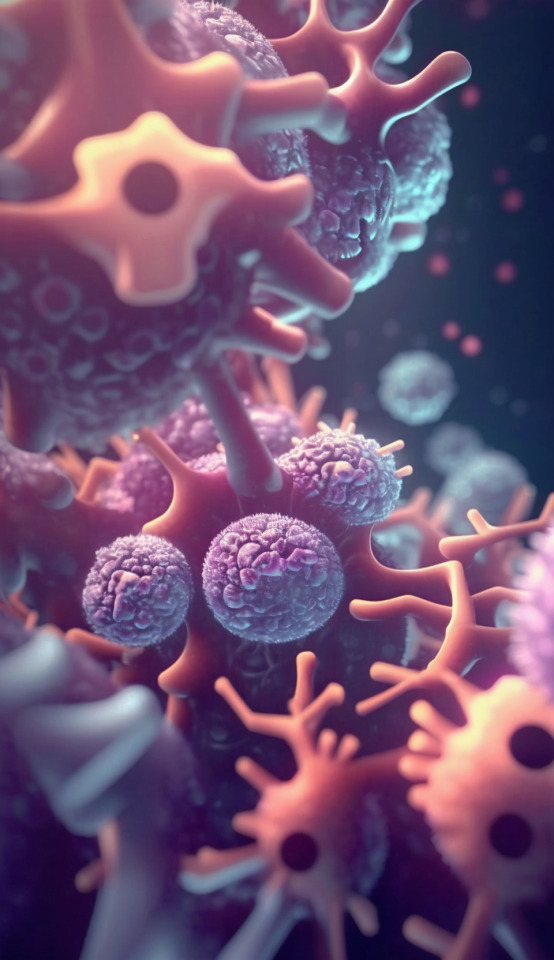
Major Milestones in Nanotechnology
Scanning Probe Microscopy
In the early 1980s, the invention of scanning probe microscopy revolutionized nanotechnology research. The scanning tunneling microscope (STM) and atomic force microscope (AFM) allowed scientists to visualize and manipulate individual atoms and molecules with unprecedented precision. These breakthroughs opened up new possibilities for studying nanoscale phenomena and laid the groundwork for further advancements in the field.
Fullerenes and Nanotubes
In 1985, a significant discovery shook the scientific community—the identification of fullerenes. Researchers Robert Curl, Harold Kroto, and Richard Smalley stumbled upon these unique carbon molecules, marking the birth of a new class of nanomaterials. Fullerenes paved the way for the development of carbon nanotubes, cylindrical structures with remarkable strength and conductivity. These nanotubes would go on to become key building blocks in various nanotechnology applications.
Nanotechnology in Medicine
Nanotechnology's potential to revolutionize healthcare became evident with the advent of targeted drug delivery systems. Nanoparticles, such as liposomes and polymeric nanoparticles, can be designed to encapsulate drugs and deliver them precisely to targeted cells or tissues. This approach minimizes side effects and maximizes therapeutic efficacy. Additionally, nanotechnology plays a vital role in imaging techniques, enabling highly sensitive and precise detection of diseases at the molecular level.
Nanoelectronics and Quantum Computing
The relentless pursuit of smaller, faster, and more energy-efficient electronics led to the emergence of nanoelectronics. By utilizing nanoscale materials and devices, researchers have pushed the boundaries of traditional silicon-based technology. Nanoscale transistors, quantum dots, and nanowires have paved the way for advancements in computing power, memory storage, and energy efficiency. Furthermore, the field of quantum computing, which harnesses quantum phenomena at the nanoscale, holds the promise of solving complex problems that are currently beyond the capabilities of classical computers.
Nanomaterials and Energy
Nanotechnology has also played a significant role in addressing global energy challenges. By developing advanced nanomaterials, scientists have made strides in enhancing solar cell efficiency, enabling the production of clean and renewable energy. Nanomaterials have also been employed in energy storage devices, such as batteries and supercapacitors, to improve their performance and longevity. Additionally, nanotechnology has opened up avenues for energy harvesting and energy conversion, contributing to a more sustainable future.
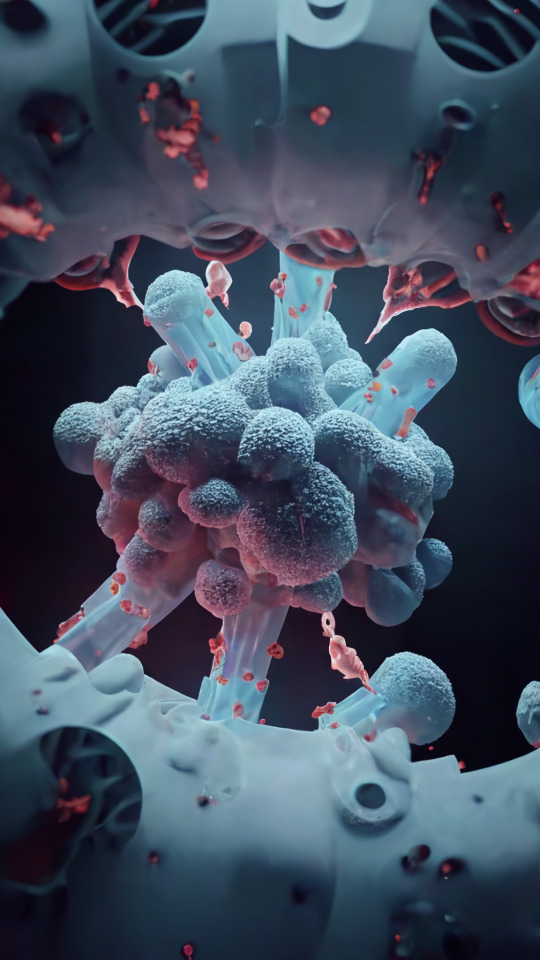
Transformative Applications of Nanotechnology
Nanomedicine and Disease Treatment
Nanotechnology has revolutionized medicine, offering innovative solutions for disease diagnosis, treatment, and prevention. Targeted drug delivery systems, nanoscale imaging techniques, and nanobiosensors have transformed the landscape of healthcare, enabling personalized and precise interventions. From cancer therapy to regenerative medicine, nanotechnology has the potential to revolutionize patient care and improve outcomes.
Nanoelectronics and Wearable Technology
The marriage of nanotechnology and electronics has given rise to the era of wearable technology. Nanoscale sensors, flexible displays, and energy-efficient components have paved the way for smartwatches, fitness trackers, and augmented reality devices. These advancements in nanoelectronics have made it possible to integrate technology seamlessly into our everyday lives, enhancing convenience and connectivity.
Nanomaterials and Advanced Manufacturing
Nanotechnology has propelled advancements in materials science and manufacturing. Nanomaterials with tailored properties and enhanced performance characteristics have found applications in aerospace, automotive, and construction industries. From lightweight and high-strength composites to self-cleaning surfaces and energy-efficient coatings, nanomaterials have revolutionized product design, durability, and sustainability.
In Conclusion
Nanotechnology's journey from its conceptualization to its present-day applications has been nothing short of extraordinary. The field's remarkable achievements in diverse domains, including medicine, electronics, and energy, continue to drive innovation and shape the future. As we delve deeper into the nanoscale world, the possibilities seem boundless. With ongoing research and collaboration, nanotechnology will undoubtedly unlock new frontiers, leading to breakthroughs that will reshape industries and improve lives across the globe.
#history of nanotechnology#richard feynman#chemestry#green chemistry#nanotechnology#science#nanomaterials#nanocoating#nanomedicine#probe microscopy#revolutionary
3 notes
·
View notes
Text
Global Atomic Force Microscope (Afm) Market Size, Share - Forecast To 2033
Global Atomic Force Microscope (Afm) Market Market research report provides a complete overview of the market by examining it both qualitatively and statistically, including particular data and in-depth insights from several market segments. While the qualitative analysis of market dynamics, which includes growth drivers, challenges, constraints, and so on, offers in-depth insight into the market's current and potential, the quantitative analysis includes historical and forecast statistics of major market segments. Get Free Request Sample : https://www.globalgrowthinsights.com/enquiry/request-sample-pdf/atomic-force-microscope-afm-market-100056 Who is the Top largest companies (Marketing heads, regional heads) of Atomic Force Microscope (Afm) Market?A.P.E. Research, JPK Instruments, Keysight Technologies, Witec, Bruker Corporation, Asylum Research (Oxford Instruments), Park Systems, RHK Technology, Nanonics Imaging, NT-MDT, Nanosurf, Anasys Instruments, Hitachi High-TechnologiesMarket Segmentations:On the thought of the product, this report displays the assembly, revenue, price, Classifications market share and rate of growth of each type, primarily split intoResearch Grade AFM, Industrial Grade AFMOn the thought of the highest users/applications, this report focuses on the status and outlook for major applications/end users, consumption (sales), market share and rate of growth for each application, includingBiomedical & Pharmaceutical, Semiconductor, Industrial, OthersKey Drivers of the Atomic Force Microscope (Afm) Market MarketTechnological Innovation: The pulse of the Atomic Force Microscope (Afm) Market market is its ongoing technological evolution, enhancing product and service efficiency. Innovations span materials, manufacturing, and digital technologies.Surging Demand: Factors like population growth, urbanization, and shifts in consumer preferences are fueling a rising demand for Atomic Force Microscope (Afm) Market products and services, propelling market expansion.Regulatory Encouragement: Supportive government measures, including incentives and regulations favoring Atomic Force Microscope (Afm) Market adoptions, such as renewable energy subsidies and carbon pricing, are catalyzing market growth.Environmental Consciousness: The growing awareness of environmental issues and carbon footprint reduction is accelerating the uptake of eco-friendly and renewable Atomic Force Microscope (Afm) Market solutions.Cost Efficiency: The decreasing costs associated with producing and deploying Atomic Force Microscope (Afm) Market solutions, thanks to technological progress, competitive markets . View Full Report @: https://www.globalgrowthinsights.com/market-reports/atomic-force-microscope-afm-market-100056 About Us:Global Growth Insights is the credible source for gaining the market reports that will provide you with the lead your business needs. At GlobalGrowthInsights.com, our objective is providing a platform for many top-notch market research firms worldwide to publish their research reports, as well as helping the decision makers in finding most suitable market research solutions under one roof. Our aim is to provide the best solution that matches the exact customer requirements. This drives us to provide you with custom or syndicated research reports.
#Marketsize#Markettrends#growth#Researchreport#trendingreport#Business#Businessgrowth#businessTrends#GGI#Globalgrowthinsights
0 notes
Text
The traditional view of DNA as a rigid, static double helix is far from the "real motion" of DNA. In reality, DNA is a highly dynamic and flexible molecule that undergoes constant motion at various scales, from atomic vibrations to large-scale conformational changes. This dynamic behavior is crucial for its biological functions.
Here's what we understand about the real motion of DNA:
1. Atomic-level Vibrations and Fluctuations:
* Breathing and Wriggling: Even in its stable double helix form, DNA constantly undergoes small, rapid fluctuations. Base pairs can "breathe" (momentarily open and close), and the strands can "wiggle" and twist. These motions are on the order of picoseconds to nanoseconds.
* Base Stacking and Pairing: The interactions between stacked bases (base stacking) and complementary base pairs (hydrogen bonds) are dynamic, allowing for minor adjustments in structure.
2. Local and Global Bending and Twisting:
* Flexibility: DNA is not a rigid rod. It can bend, twist, and loop. This flexibility is essential for its packaging into chromosomes, where it's tightly wound around proteins called histones.
* Sequence-dependent Flexibility: The specific sequence of bases in DNA influences its local flexibility. Some sequences are more prone to bending or twisting than others, which can impact protein binding.
* Supercoiling: DNA can become supercoiled, meaning it's twisted upon itself. This supercoiling can be positive (overwound) or negative (underwound) and plays a vital role in DNA compaction and regulating gene expression.
3. Interaction with Proteins and Enzymes:
* Induced Fit: When proteins bind to DNA, both the protein and the DNA often undergo conformational changes to achieve an optimal fit. This "induced fit" mechanism is dynamic.
* Enzyme Action: Enzymes involved in DNA replication, repair, and transcription actively manipulate DNA. For example, DNA helicase unwinds the double helix, and DNA polymerase moves along the strand, adding new nucleotides. These processes involve significant movement of the DNA molecule.
* Loop Extrusion: Proteins like condensin can actively extrude loops of DNA, compacting the genome. This involves large-scale, directed movements of the DNA molecule.
4. Movement within the Cell:
* Diffusion: DNA molecules, especially smaller fragments, can undergo Brownian motion (random movement due to collisions with other molecules) within the cell.
* Directed Movement: During processes like DNA replication and gene expression, DNA can be actively moved within the nucleus or cytoplasm. For example, replication forks move along the DNA as new strands are synthesized.
* Chromosomal Dynamics: Entire chromosomes, which are highly condensed forms of DNA, also exhibit dynamic behavior within the nucleus, changing their positions and interactions with other nuclear components.
Techniques for Studying DNA Motion:
Scientists use various techniques to visualize and understand DNA's dynamic behavior, including:
* Molecular Dynamics (MD) Simulations: Computer simulations that model the movement of individual atoms and molecules over time, providing insights into DNA flexibility and interactions.
* Single-Molecule Fluorescence Imaging: Techniques like single-molecule real-time (SMRT) imaging and DNA curtains allow researchers to directly observe the movement of individual DNA molecules and their interactions with proteins in real-time.
* Atomic Force Microscopy (AFM): Provides high-resolution images of DNA structure and can sometimes be used to observe conformational changes.
In summary, DNA is not a static blueprint but a living, breathing, constantly moving molecule. Its dynamic nature is fundamental to its ability to store, replicate, repair, and express genetic information.
In living cells, DNA is not static; it is constantly in motion within the nucleus, a dynamic process crucial for gene regulation. This movement allows for the interaction of different DNA regions, particularly enhancers and promoters, which is essential for gene activation and the production of proteins needed for cellular processes.
Elaboration:
DNA is not static:
Although DNA is tightly packed into chromosomes to fit into the small nucleus, these chromosomes are not fixed in place. They are constantly moving and jiggling.
Movement facilitates gene activation:
This movement allows specific regions of DNA, like enhancers and promoters, to come into close proximity and interact. This interaction is a key step in turning genes on or off.
Dynamic interaction for protein production:
When enhancers and promoters interact, the cell's machinery can read the gene's information and produce RNA, which eventually leads to the production of proteins.
Importance of dynamic DNA organization:
The way DNA is organized and how it moves in 3D space is crucial for proper cell function.
Techniques for visualizing DNA movement:
Scientists can track DNA movement in living cells using techniques like fluorescent labeling and measuring the distance between specific regions over time.
Different types of DNA and their movement:
Euchromatic regions (where genes are active) tend to have more nucleosome movement, while heterochromatic regions (where gene activity is suppressed) exhibit more restricted movement, according to a recent study published in Science Advances.
Consequences of DNA movement:
The dynamic movement of DNA influences gene expression, DNA replication, and other essential cellular processes.
0 notes
Text
New publication out!
We were curious what happens with the lipid membrane if proteins are inside. As a model of membrane proteins we use transmembrane peptides with neutral and positive charge. The charges turn out to be quite crucial in the peptides influence on the lipids.
publication link: https://doi.org/10.1016/j.colsurfb.2024.113765…
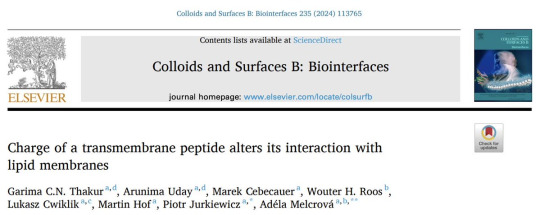
All transmembrane peptides hinder mobility of lipids around. The positive charges in the peptide make this hindering a long range influence.
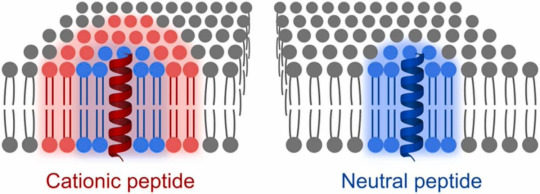
The membrane with the positive peptides then has heterogeneities in the lipid mobility. This hampers free rearrangement of lipids and leads to lower ability to seal ruptures. You can see below how the membrane stays fragmented after indentations with AFM (atomic force microscope), which is basically a very tiny tip that scans the surface of the membrane for images and can also push through it to test mechanical stability.
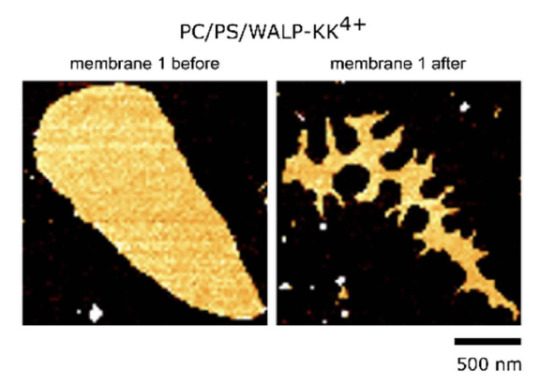
For comparison this is how it looks like with a membrane without any peptides. The mebrane seals the ruptures induced by the AFM tip and recovers its round shape. The same happens if we have a neutral, non-charged, peptide.
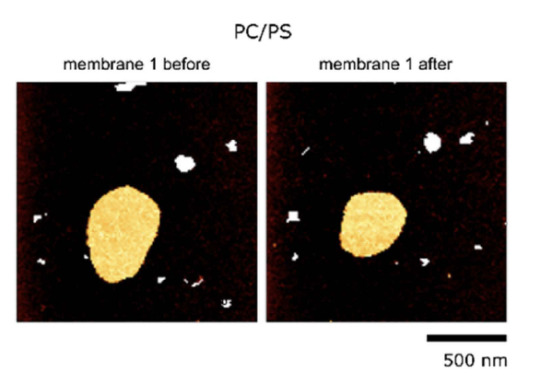
With this work we highlight the importance of including charges of proteins and peptides in membrane model studies.
And last but not least...
This is the very first time I am the last corresponding author of a publication. I am immensely proud on myself!
#science#women in science#research#biophysics#afm#fluorescence#simulations#peptides#proteins#cell membranes#publication#collaboration#corresponding author#proud#original content
16 notes
·
View notes
Text
How Materials Metric LLC is Shaping the Future with Analytical Testing, Materials Testing, and Pre-Clinical Trial Services
In the ever-evolving landscape of materials science and biotechnology, the need for precise, innovative, and customized research solutions has never been more crucial. At the forefront of this transformation is Materials Metric LLC, a cutting-edge Contract Research Organization (CRO) that specializes in bridging the gap between academic research and industry demands. Leveraging advanced Analytical Testing Services, comprehensive Materials Testing Services, and robust Pre-Clinical Trial Services, Materials Metric stands as a beacon of innovation, collaboration, and scientific excellence.
A Partner in Innovation
Materials Metric LLC is more than a traditional CRO—it is a strategic research partner committed to addressing the complex needs of small-to-medium enterprises (SMEs), large corporations, and academic researchers. Through close collaborations with leading universities and research organizations, the company crafts bespoke research and development services that cater to the intersection of chemistry, biology, and materials science.
The company’s core strength lies in its multidisciplinary approach. By combining the expertise of microbiologists, materials scientists, analytical chemists, biomedical engineers, and regulatory experts, Materials Metric ensures comprehensive support throughout every stage of the product development lifecycle—from initial research and validation to pre-clinical trials and commercialization.
Comprehensive Analytical Testing Services
At the heart of Materials Metric’s operations is a sophisticated suite of Analytical Testing Service. These services are essential for evaluating the composition, structure, and functionality of materials across diverse industries such as aerospace, biomedical, and advanced manufacturing.
Utilizing state-of-the-art instrumentation like Scanning Electron Microscopy (SEM), Atomic Force Microscopy (AFM), Transmission Electron Microscopy (TEM), and Energy-Dispersive X-ray Spectroscopy (EDX), the organization provides unparalleled insights into material characteristics at the micro and nano scales. Additional capabilities include Fourier Transform Infrared Spectroscopy (FTIR), Raman Spectroscopy, Nuclear Magnetic Resonance (NMR), and Mass Spectrometry (MS), all of which contribute to highly detailed analyses that support innovation and ensure regulatory compliance.
These analytical services are not just tools—they are integral elements in ensuring the safety, reliability, and efficacy of new technologies, especially in high-stakes applications like medical devices and pharmaceutical development.
Advanced Materials Testing Services
Materials Metric’s Materials Testing Services are equally impressive. These services go beyond routine quality checks, offering deep, data-driven evaluations of strength, ductility, durability, and performance under various environmental conditions.
From mechanical and thermal testing to imaging and histology, the company provides a full spectrum of assessments. Capabilities include Differential Scanning Calorimetry (DSC), Thermogravimetric Analysis (TGA), Dynamic Mechanical Analysis (DMA), and Thermomechanical Analysis (TMA), allowing clients to understand how their materials behave under different thermal conditions. These insights are critical for refining product designs, ensuring long-term reliability, and reducing time-to-market.
Materials Metric also supports biomechanical testing using cadaveric models, assessing the stability and performance of implants and biomedical devices—making it a vital partner for the medical technology industry.
Specialized Pre-Clinical Trial Services
The journey from concept to commercialization in medical and biotech industries involves rigorous validation steps. Materials Metric’s Pre-Clinical Trial Services are specifically designed to meet these challenges. Through both in-vitro and in-vivo studies, the company evaluates biocompatibility, toxicity, extractables and leachables, and antimicrobial efficacy—key components in medical product development.
In particular, the firm’s expertise in biofilm evaluation, cytotoxicity testing, and histological imaging supports early identification of potential risks, enabling clients to navigate complex regulatory landscapes like those of the U.S. FDA with confidence.
Additionally, modeling services such as Pharmacometric Analysis, Quantitative Systems Pharmacology (QSP), and Computational Genomic Modeling provide advanced predictive insights to guide experimental design and clinical strategies. These services, powered by AI and machine learning, streamline the development process and enhance decision-making at every level.
A Unique Model for R&D Collaboration
What sets Materials Metric apart is its academic and industry collaboration model. Unlike conventional CROs that rely heavily on standard testing templates, Materials Metric thrives on customization. By forming strategic alliances with select academic institutions, the company taps into cutting-edge research, specialized facilities, and leading scientific minds. This synergy ensures that clients benefit from the most recent scientific advancements and the most efficient paths to innovation.
The company’s commitment to client success is reflected in its flexible engagement models, tailored research protocols, and hands-on project management approach. Whether a project requires a single test or a comprehensive research program, clients are met with the same dedication, speed, and scientific rigor.
A Vision for the Future
Materials Metric envisions a world where science and industry work hand-in-hand to drive progress in materials development, medical innovation, and environmental sustainability. With a mission to accelerate research and innovation through collaborative and cost-effective solutions, the organization is well-positioned to shape the future of materials science.
Their long-term goal is to become a global hub for integrated research services that support the full lifecycle of product development—an ambition that aligns perfectly with their expanding capabilities in Analytical Testing Services, Materials Testing Services, and Pre-Clinical Trial Services.
Conclusion
In a time where precision, speed, and collaboration are paramount, Materials Metric LLC offers a unique blend of scientific expertise, cutting-edge technology, and strategic partnerships. Whether you're a researcher developing a novel biomaterial or a corporation seeking to validate a new product, Materials Metric provides the comprehensive, customized support needed to turn concepts into market-ready solutions. Through their dedication to excellence in Analytical Testing Services, Materials Testing Services, and Pre-Clinical Trial Services, they continue to set the benchmark for innovation in materials science.
0 notes
Text

Imaging advance creates clearer picture of organic solar cells' molecular structure
Research on organic solar cells has been conducted for a long time. Recent advancements in understanding their molecular structures are now paving the way for the development of highly efficient solar cells. "By using atomic force microscopy-infrared spectroscopy, AFM-IR, we've been able to create clearer images of the morphology or structure of the material," says Ishita Jalan, postdoc in physical chemistry and main author of a recently published article in ACS Applied Polymer Materials. This structure and how it can be controlled determines the effect of the solar cell.
Read more.
#Materials Science#Science#Solar power#Materials characterization#Structures#Atomic force microscopy#Polymers#Karlstad University
4 notes
·
View notes